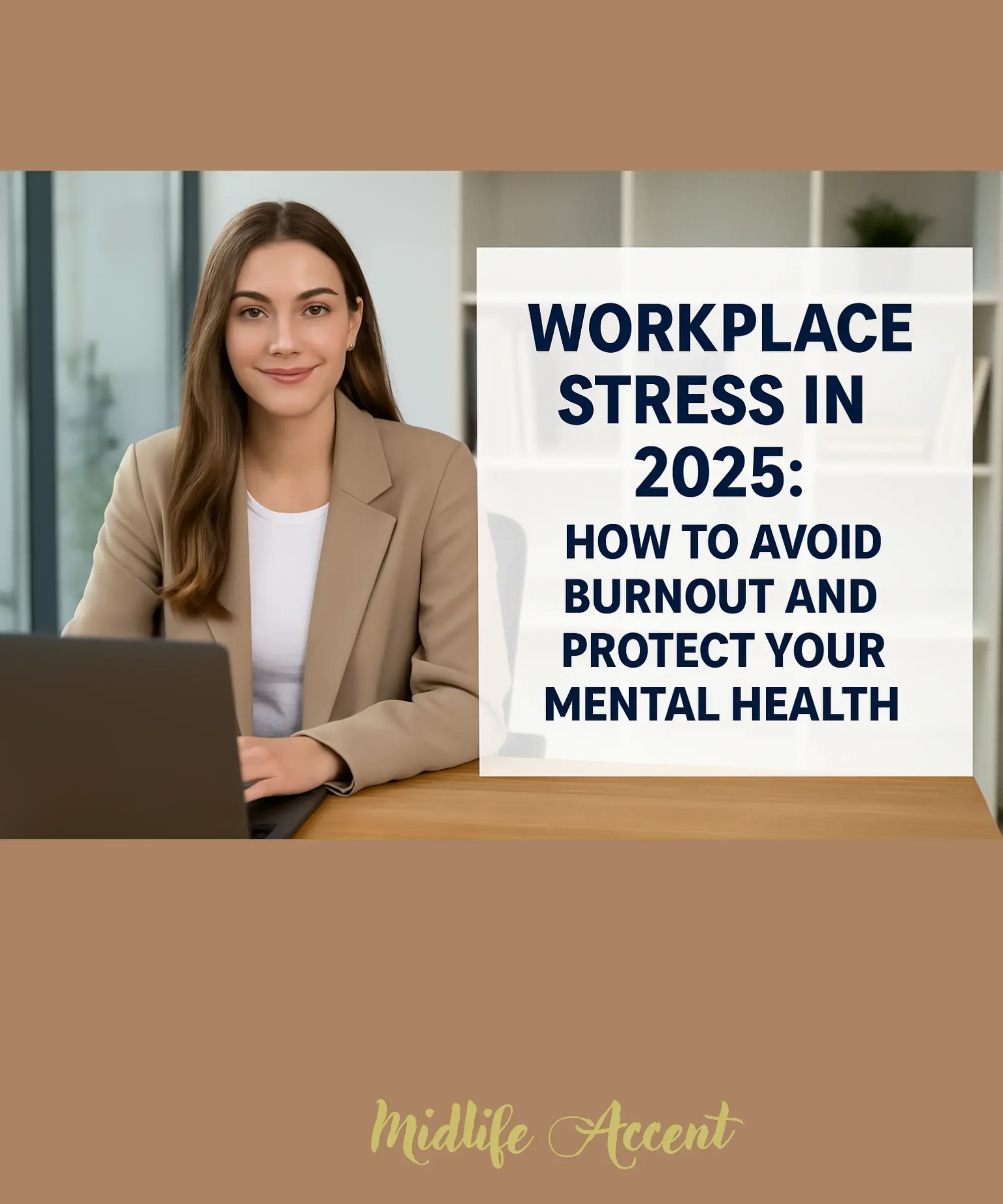Workplace Stress | Avoid Burnout and Protect Your Mental Health
Workplace Stress in 2025
If you thought workplace stress peaked during the pandemic, 2025 is here to prove otherwise. Deadlines tighten like a vise, inboxes flood faster than you can empty them, and hybrid work has erased the boundary between on the clock and off the clock.
Layer on economic uncertainty and the relentless ping of digital notifications, and you’ve got the perfect recipe for burnout.
But here’s the good news: even in this high-pressure landscape, you can protect your mental health. You can draw the line, reclaim your balance, and keep burnout from taking root.
In this post, we’ll break down what’s fueling workplace stress right now, how to recognize it before it derails you, and the strategies that work—proven, practical, and doable.
Why Workplace Stress Is Rising in 2025
Always-On Culture: The expectation to be reachable 24/7 via email, Slack, or Teams.
Economic Pressures: Layoffs, cost-cutting, and the pressure to “do more with less.”
Hybrid Work Challenges: Difficulty separating work from personal time.
AI & Automation Anxiety: Fear of being replaced or left behind.
Information Overload: The mental drain from constant news, social media, and meetings.
Early Signs of Workplace Burnout
Burnout doesn’t appear overnight—it creeps in. Here are red flags to watch for:
Persistent fatigue (even after a weekend off)
Feeling cynical or detached about your work
Increased irritability or impatience with coworkers
Declining performance and concentration
Physical symptoms: headaches, stomach issues, muscle tension
If you’re nodding along, it’s time to make changes before it escalates. You may also find it helpful to read my guide on How to Know When You’re Stressed: 10 Physical Signs of Stress on Your Body (and How to Fix Them)
🛠 Strategies to Avoid Burnout
1. Set Clear Boundaries
Define your work hours—and stick to them.
Silence notifications after hours.
Communicate availability to your team.
2. Rethink Your Workspace
If working from home, create a physical “end of work” ritual: shut the laptop, change clothes, take a short walk.
Keep work tools out of sight after hours.
3. Micro-Breaks and Movement
Stand, stretch, or take a 5-minute walk every hour.
Try the “20-20-20” rule for eye strain: every 20 minutes, look at something 20 feet away for 20 seconds.
4. Mindfulness & Stress Relief Practices
Practice breathing exercises, meditation, or journaling before and after work.
Even 2 minutes of slow breathing can reduce cortisol levels—see my post on How to Lower Cortisol Naturally: 10 Ways for Midlife Women to Reduce Stress for more tips.
5. Communicate Openly
If you’re overwhelmed, talk to your manager or HR.
Advocate for workload adjustments or flexible scheduling.
6. Leverage Your Time Off
Don’t let vacation days go unused—your brain needs extended downtime.
Plan short breaks during the year, not just one long holiday.
💡 Affiliate Disclaimer: Some links in this post may be affiliate links, which means I may earn a small commission if you click through and make a purchase—at no extra cost to you. I only recommend products I personally use, trust, and believe will bring value to your health, wellness, and lifestyle.
The Mental Health Toolkit for 2025
Apps & Tools: Use mental health apps like Headspace, Calm, or Breathwrk.
Supplements: Consider adaptogens like Ashwagandha or Magnesium L-Threonate (check with your healthcare provider first). Check on my post Why I do like Magnesium L-Threonate
Community: Join professional groups or coworking spaces for human connection.
Physical Health: Prioritize sleep, hydration, and balanced meals.
Final Thoughts
Workplace stress in 2025 is real, but so is your power to manage it. Burnout is not a badge of honor—it’s a warning sign. Protecting your mental health isn’t selfish; it’s the smartest investment you can make for your career and your life.
Start with one change today—set that boundary, take that walk, breathe deeply. Your mind (and your future self) will thank you.
For a deeper understanding of stress management, explore How to Know When You’re Stressed and How to Lower Cortisol Naturally to build your complete stress relief plan.
Disclaimer: This article is for informational purposes only and is not a substitute for professional medical or psychological advice. Always consult a qualified healthcare provider for personalized guidance.
Affiliate Disclaimer
Some links in this post may be affiliate links, which means I may earn a small commission if you click through and make a purchase—at no extra cost to you. I only recommend products I personally use, trust, and believe will bring value to your health, wellness, and lifestyle. Your support helps keep this site running and allows me to continue creating free content. Thank you!


